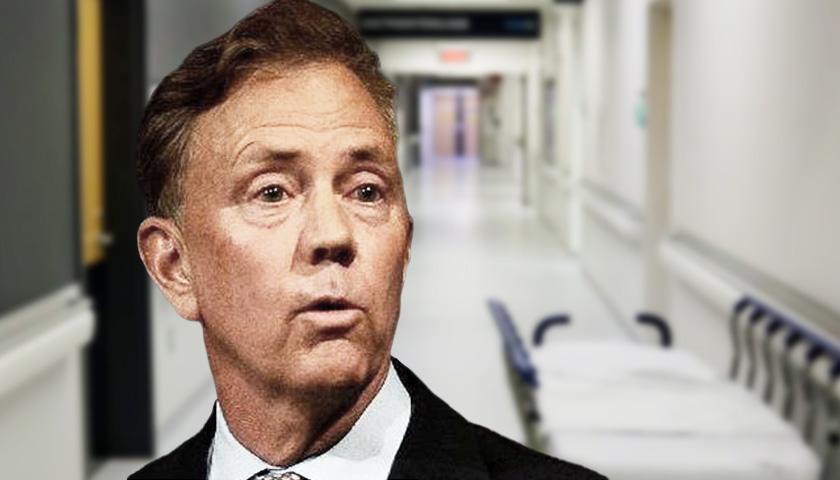by Christian Wade
Connecticut Gov. Ned Lamont’s plan to control health care costs in the state is facing blowback over claims it would cost hospitals hundreds of millions of dollars in lost revenue.
Lamont’s proposal, which is being considered by the Legislature’s Joint Committee on Public Health, calls for reducing costs that often get tacked on to consumers’ medical bills, such as facility fees that charge patients for the use of medical and hospital offices during treatments, which he says would save the state’s consumers $400 million a year.
But the proposal is strongly opposed by the state’s safety-net hospitals and other health care interests who say curbing the fees would siphon a crucial source of revenue.
Kathleen Silard, president and CEO of Stamford Health, said pulling back revenue from the off-site facility fees would cost the hospital system about $110 million a year or about 13% of its revenue. She said it would force the health care group to take “drastic action” that would have “little discernible benefit to patients and the community.”
“This would have a severe impact on Stamford Health at a time when we, like hospitals across the state, are also experiencing financial hardships brought on by inflation and workforce shortages,” Silard wrote in testimony opposing the bill.
The Connecticut Hospital Association wrote in testimony that the legislation is “an unfortunate departure from the spirit of collaboration and cooperation that has been the hallmark of statewide discussions on how to address health care affordability.”
But Lamont administration officials are defending the proposal, saying it will lower overall health care costs by curtailing facility fees and making prescription drugs more affordable.
“The time has come for concrete action on health care affordability. Its impact on our residents is stark — Americans collectively spend over $400 billion a year out of their pockets,” Dr. Deidre Gifford, the executive director of the state Office of Health Strategies, wrote to lawmakers in testimony. “Last year, almost 40% of Americans put off care due to cost – a record high.”
State Comptroller Sean Scanlon said he supports the proposal because it would authorize his office to enter into a national consortium called ArrayRx to provide Connecticut residents with a drug discount card they can use at their local pharmacy.
“The motivation behind this is clear: drug prices are rapidly increasing, and Connecticut residents desperately need price relief,” he wrote in testimony. “By joining ArrayRx, all state residents can benefit from the discounts negotiated by state employee plans at no additional charge to the state or card holder.”
Lamont’s proposal is also supported by the Connecticut Association of Health Plans, a trade group representing insurance companies, which says the legislation seeks to “address the underlying unit cost of health care that is driving increases in health insurance premiums.”
“Data clearly indicates that hospital inpatient, hospital outpatient, and pharmacy are the major cost drivers in the system,” the group said in written testimony.
Specifically, health insurers want to see limits on facility fees that hospitals are charging patients, in some cases for outpatient services, and a reining in of prescription drug costs, which the group says “continue to increase at an unsustainable rate with 15% to 20% of the premium dollar now attributed to the cost of drug coverage alone.”
The proposal is part of a broader package aimed at reducing Connecticut’s skyrocketing healthcare costs, which are among the highest in the nation.
Lamont has also filed a proposal, which calls for eliminating “anticompetitive” practices in the healthcare industry that would limit out-of-network costs for inpatient and outpatient services to 100% of the Medicare rate for the same service in the same geographic area, among other provisions.
In February, Lamont proposed a plan as part of his $50.5 billion preliminary budget package to tap into the state’s share of federal pandemic relief funds to “erase” an estimated $2 billion in medical debt owed by the state’s residents.
– – –
Christian Wade is a contributor to The Center Square.
Photo “Ned Lamont” by Ned Lamont. Background Photo “Hospital” by Miguel Ausejo.





